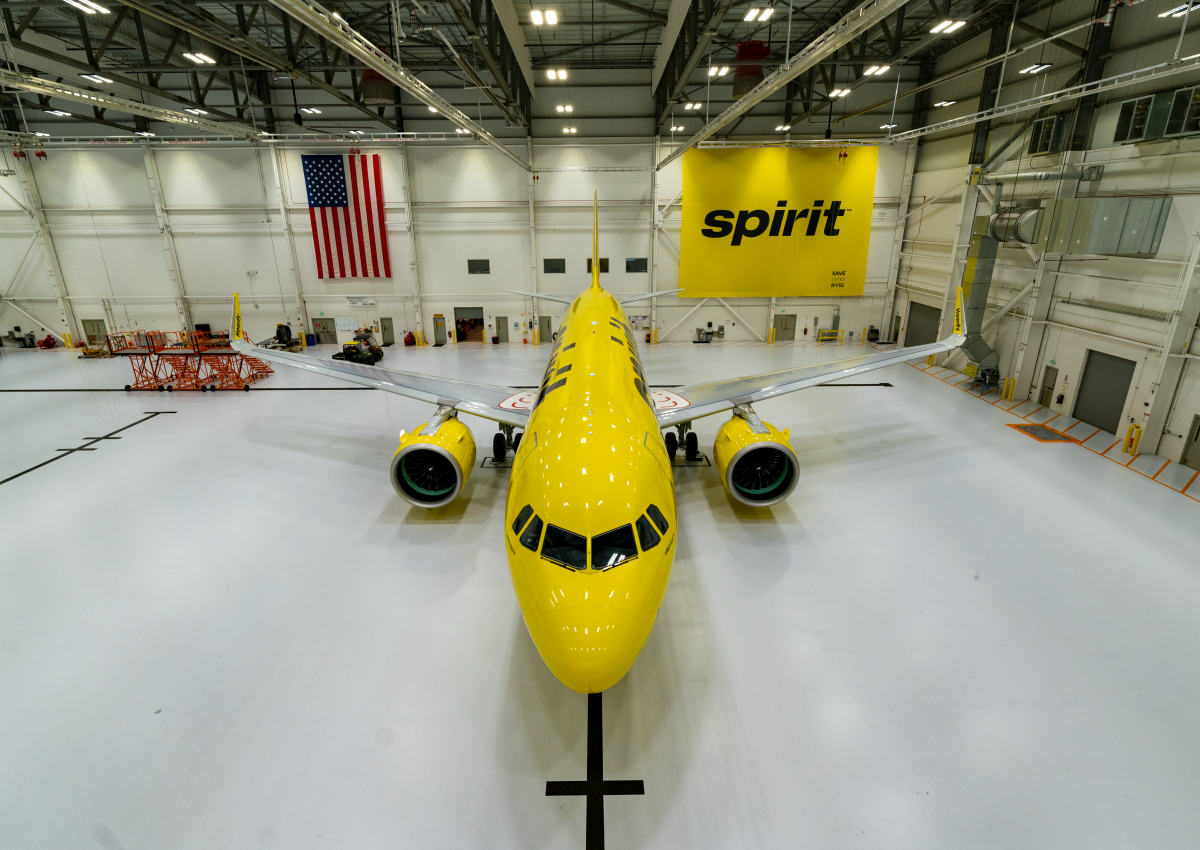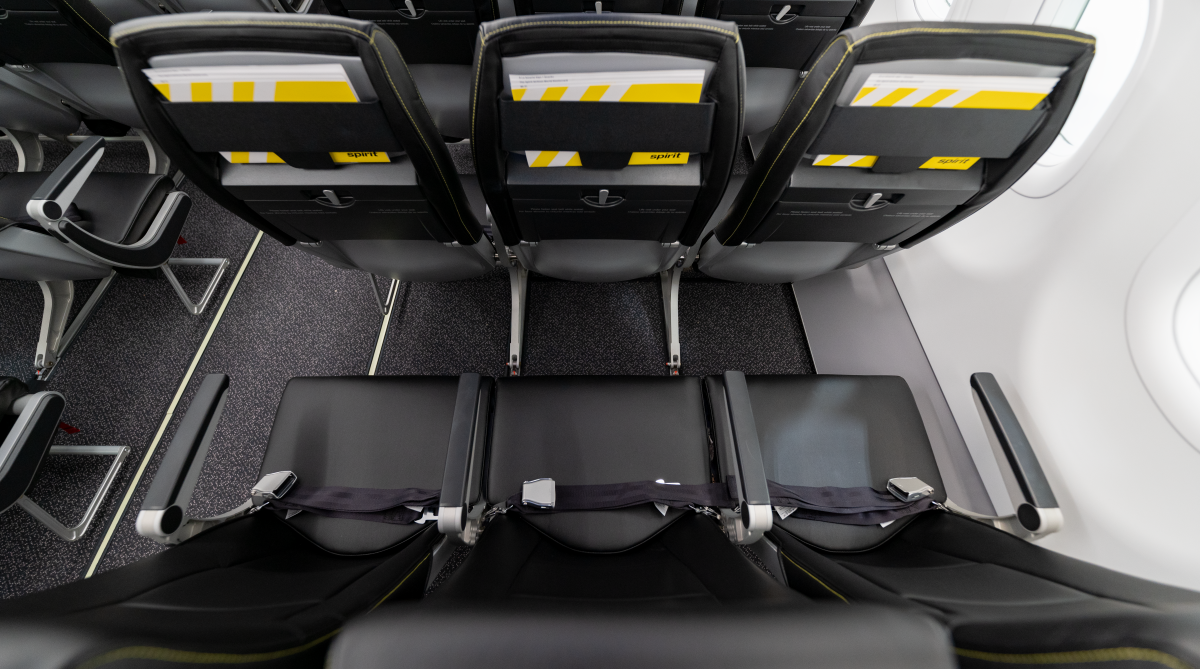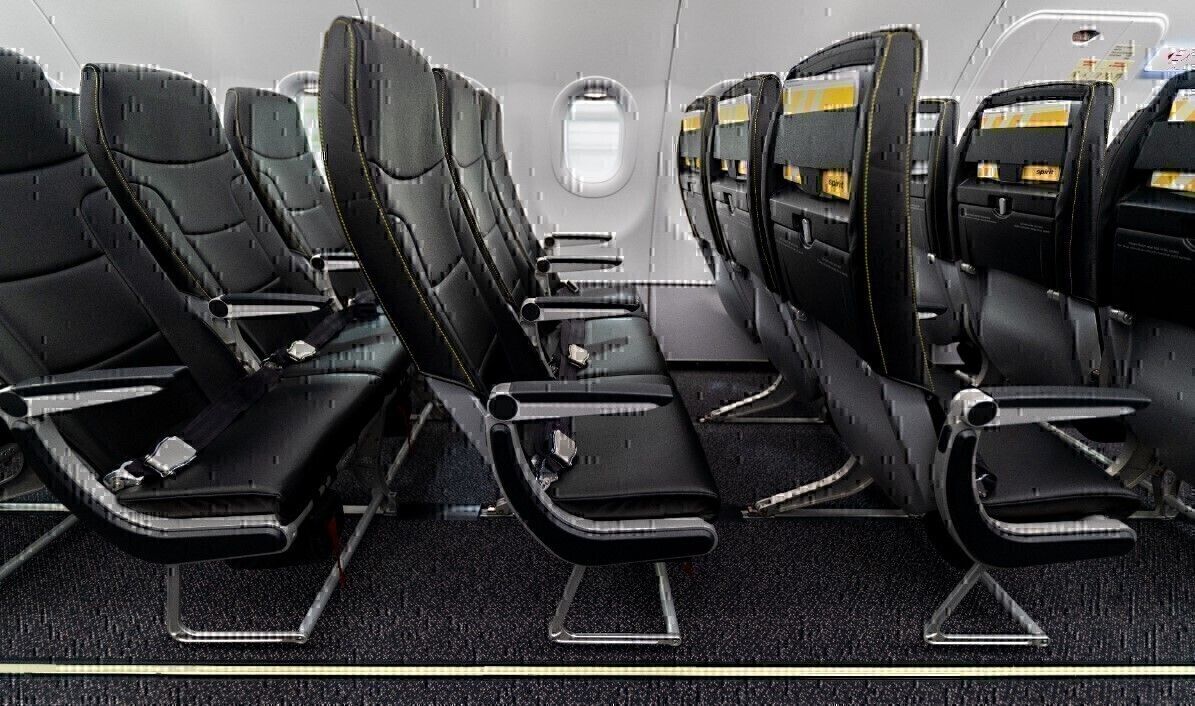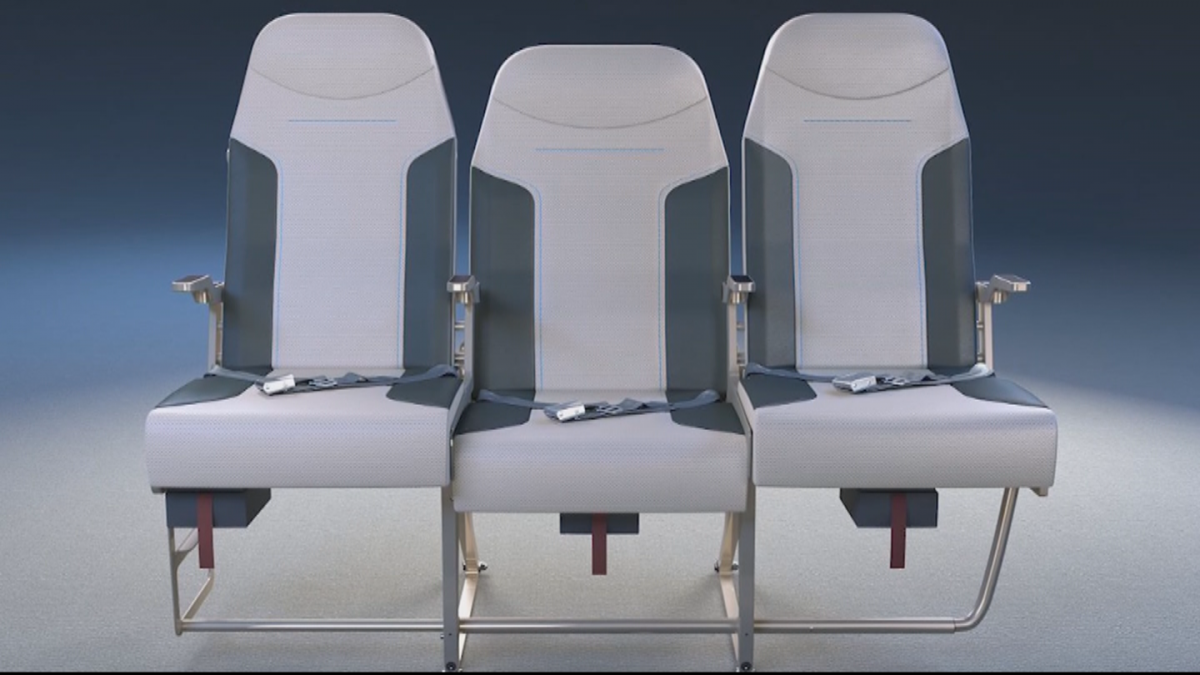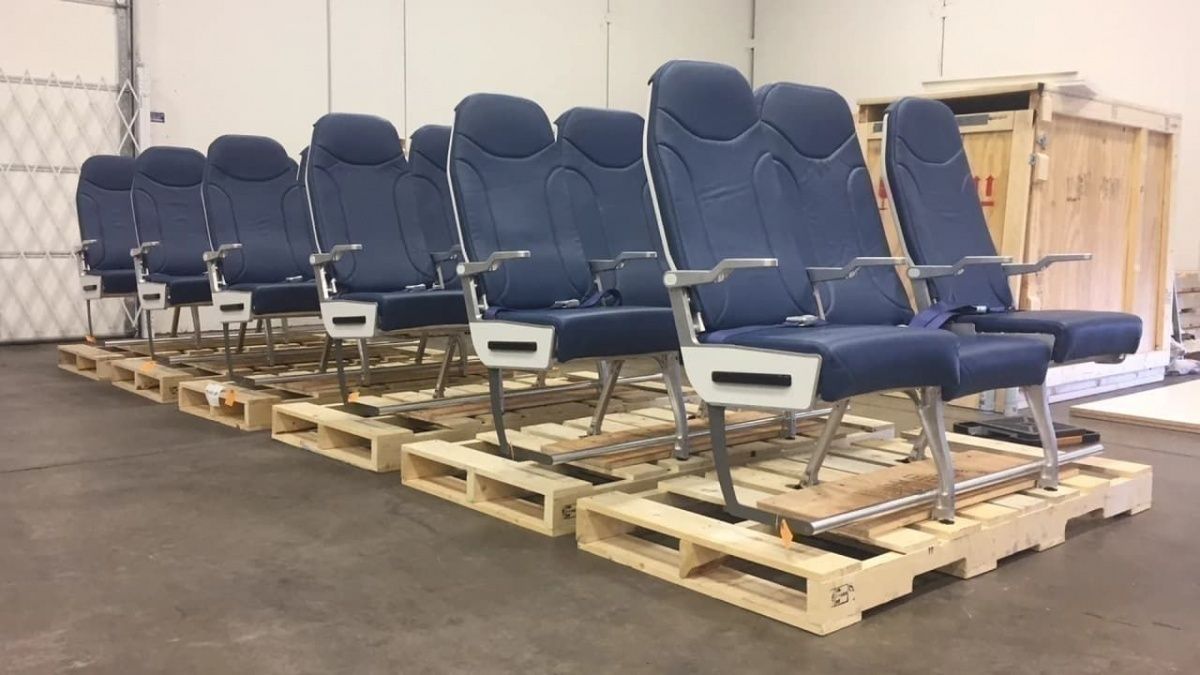Getting assigned the middle seat is the air travel equivalent of drawing the short straw. With no window to look out of and no direct aisle access, it is the threat of the middle seat on a full plane that keeps us paying for seat allocation on low-cost airlines. However, a couple of new products are set to shake up this notion and could make the middle seat on a low-cost carrier a much more attractive proposition.
Eliminating the pain of the middle seat
For as long as aircraft have been flying, one in every three passengers has drawn the proverbial short straw of air travel, being assigned to the middle seat. While window passengers get the view and aisle passengers rapid access to the loo, the middle seat passenger gets to fight for elbow room for the duration of the flight.
Airlines understand the pain of the middle seat, but in a conventional aircraft layout, it’s pretty much unavoidable. However, interior cabin designers are working on some solutions that could make it a more attractive proposition in the future. I spoke to Dr. Joe Leader, CEO of the Airline Passenger Experience Association (APEX), for a recent Simple Flying podcast. He told me about one such design:
“At APEX Expo last fall, Spirit launched a new series of Acro seats that give each passenger in the existing space more room, more tray table, more comfort and more built-in recline. All of this is delivered in a lighter seat, certified by the Ergonomics Institute, will be much more comfortable for passengers.
“That’s where I believe we have a great ray of light moving forward, is that on more aircraft you will see the middle seat becoming a wider seat.”
It’s an interesting means of tackling the issue; by making the middle seat more accommodating, not only does that middle passenger get more room overall, but they also have more space to separate themselves from their neighbors.
The Acro seat
Designed by UK-based Acro Aircraft Seating, Spirit Airlines chose the Acro Series 6LC. This model is aimed squarely at low-cost carriers, taking the best bits of the Series 3 seat, a low-cost carrier staple, and combining it with the comfort of the Series 6 model, traditionally more prevalent on full-service airlines.
Designing for the low-cost market has led the seat to have a number of standard features, such as a fixed seatback and super lightweight construction. Each seat envelope, including its literature pocket and sliding tray table, weighs just 9kg. While many features are as you would expect, there is one big difference with the Acro seat – it has a wider middle seat.
The middle seat comes in at 18” wide, a whole one inch wider than the two neighboring seats. While it might not sound like a lot, on an airplane, every inch counts! The seats have other positive aspects too, such as increased legroom and more padding, and has been introduced onboard Spirit’s new A320neo deliveries.
Altogether, 40 aircraft will arrive with this product fitted, and 43 will undergo a retrofit.
Staggered middle seats
Aside from the new wider middle seat, another design house has come up with a different product designed to relieve the pain of the middle position. Joe told me,
“On more aircraft you’ll see options … which is a seat that has middle seat slightly different in terms of configuration. It’s pulled a little bit more forward or a little bit back, and it makes it so you don’t have to fight over elbow room.”
One such seat is the S1, which has been in development by Molon Labe Seating for more than five years now. The S1 has a middle seat that is slightly lower and further back from the rest of the row. It’s also slightly wider, and the result is more privacy, fewer arguments over the armrest, and all in a seat that doesn’t alter the overall capacity of the plane.
The S1 received approval by the FAA in June 2019 and is set to be installed on some working aircraft in the US by the end of this year.
The big question is, will low cost carriers look to charge more for these larger and more comfortable middle seats? Dr. Leader didn’t think so, telling me,
“I don’t think so. I mean, if you look at how seats are done right now, they have a harder time moving the middle seats, and typically your passengers have complained if they have been stuck in a middle seat. So what I believe the middle seat will become, is one where, ‘Ok I don’t have an aisle, I don’t have a window, but I have a little bit more room,’ and it’s a great equalizer, especially in aircraft that are in a configuration where that passenger will want that seat.”
Would you prefer a wider middle seat? Do you like the staggered arrangement? Let us know in the comments.

